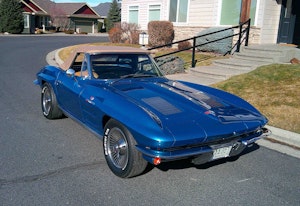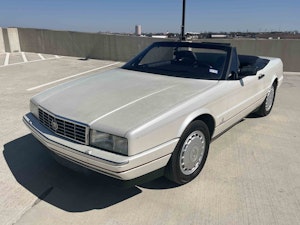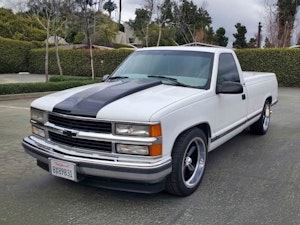Media | Articles
Electric Elise charges in just six minutes
The designer of the original Lotus Elise has teamed up with British battery-maker Nyobolt to create a revolutionary roadster.
Julian Thomson, who is now design director at GM Advanced Design Europe, says he has always wanted to evolve and modernise the design of the Elise that he first penned in 1994. Thomson was approached by Nyobolt in 2021 to create a vehicle to showcase its ultra-fast-charging battery technology, and he invited design and engineering firm Callum to the party to develop the prototype.
Obviously this isn’t the first time the Elise has been used at the base for an electric vehicle, as the original Tesla Roadster used the lightweight Lotus platform to make the most of its 53 kWh battery pack. The new concept actually uses a smaller 35 kWh hour battery to keep its weight under 2200 lbs. That limits driving range to just over 155 miles but the Nyobolt tech means its lithium-ion batteries can be fully-recharged in just six minutes, using existing charging infrastructure. Nyobolt says it has taken a “systems level approach to develop batteries capable of charging in minutes by pioneering new materials, cell designs, efficient software control and power electronics.”
“Unlocking the challenges faced by electric vehicle designers has been key to the developmen of our breakthrough fast-charging batteries,” adds Sai Shivareddy, CEO at Nyobolt. “Previously, enabling a light weight fast-charging vehicle was not possible without compromising its lifetime and so people have been relying on costly and large battery packs in the vehicle. With our unique technology we have achieved a six-minute charge car, and developed smaller battery packs that can deliver more power and charge in less time.”
Thomson’s revamped Elise, meanwhile is is wider (by 3.94 inches), and longer (by 5.91 inches) than the Elise Series 1 on which it is based. There’s new LED lighting, additional vents for cooling and the old Rover parts bin mirrors have been replaced by HD cameras.
Marketplace
Buy and sell classics with confidence
“The aim was to evolve the design and bring it up to date while keeping that iconic sports car character that was so well received in the Elise,” says Aleck Jones, creative lead at Callum.
The car is also claimed to be just as entertaining to drive as Thomson’s 90s’ fun bucket. “Nyobolt’s technology allows this car to tick all the boxes that made the original Elise such a desirable drivers’ car with a cult following, but it’s electric,” says Jones. “These two things don’t usually come hand-in-hand due to weight and battery packaging constraints.”

***
Check out the Hagerty Media homepage so you don’t miss a single story, or better yet, bookmark it. To get our best stories delivered right to your inbox, subscribe to our newsletters.












It looks good but how much is it? It’s only going to work at a track day if the track has the proper charger.
We need to change how we talk about charge rates for EVs in much the same way we should be changing how we talk about fuel efficiency for ICE cars. Gallons per mile is a better number than MPG. In EVs, charge minutes omits a big part of the equation. How large is the battery pack? What is the base charge level when beginning to charge? What is the final level? There need to be standards for the latter two questions so then we can talk about how many miles of driving can be achieved per minute of charging. The numbers should be reported not only at the maximum charging rate the car can support, but also lower, more common rates found at charging stations (and at home) today.
It’s not an easy metric, because the charge rate depends on the state of charge of the battery. You can be plugged into the biggest charger in the world but as you get over 80%, your rate of charge slows to a crawl. Even battery temperature is a factor. What you need is average charge rate over a range of state of charge, say 10-80%. And you can easily turn that into miles of range per hour, which is really easy for people to understand.
Home chargers are Level 2, and the limitation will always be the charger itself. But that’s okay, because as long as it finishes overnight the speed isn’t all that important.
Call me when it goes into production. ’til then only a pipe dream for anyone.
An article by “Green Car” says this is a one-off commissioned by Nyobolt. Other articles on the web (including this one) are not as pessimistic. Anyway, I’m with Gene. Let me know when I can buy one.
I was waiting for the punch lined where it turned out it was a toy car.
I don’t care how good they make an EV, there are just some people that will never think it is good enough. Honestly those people should be forced to drive a horse for one month to see how bad transportation care can be. They complain about 30 minute charge times, what if it was half a day and you can only fuel it if it wants to be fueled, also it stops for fuel by itself at random.
Automobiles didn’t become the primary transportation mode because the government outlawed horses. Continue this push toward electric at any cost, and you’ll see how bad transportation care can be.
anything new & different scares people– & of course-It’s not as good as doing things the old way–
from the advent of using Steam power to Electricity to Horseless carriages to Radio /tv/computers ect ect–
Lots of important info missing. What’s the range of this battery? What’s the cost? It is telling that they left this info out.
When will they build the commuter ev car plain and simple drive to work pick up groceries leave in garage charge over night OH wait they already have the Chinese did look out Ford and Chevy you about to be replaced
You are right. Even current lower end EVs like the VOLT/BOLT are apparently being phased out. In Canada, we have nothing on offer that would cost under $50k. Ideally, we would like something like the electric smart. Not only the EV part, but also the no-rust body panels. Priced at say $30k.
It’s the first Tesla Roadster, updated.
Get rid of government mandates and subsidies. If people want to purchase EVs at their real cost and put up with their range limitations, they will buy EVs. We are supposed to be a free market economy, not a centrally planned economy like the old Soviet Union and Eastern European countries behind the Iron Curtain.